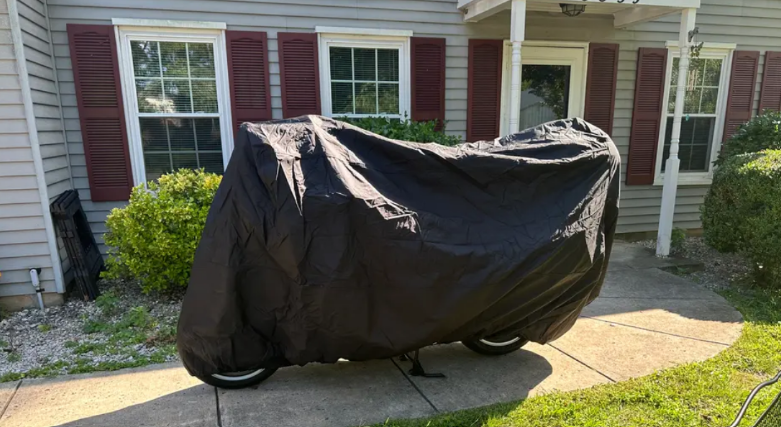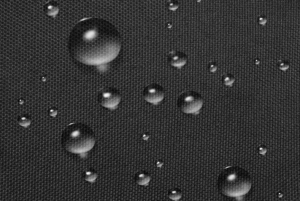How to Choose the Best Waterproof or Breathable Motorcycle Cover

You’ve just finished a late-night ride, rolled the bike to the curb, and hustled inside. Two hours later, a freak cloudburst soaks the street. The paint is fine in the morning, but when you lift the seat, you spot water-bead trails snaking toward the fuse box.
Flip the scenario: you park under a fully waterproof tarp for a rainy week, pull it off on Saturday, and a stale burst of mildew-scented air greets you. Either way, the wrong motorcycle cover can turn protection into a corrosion catalyst.
This guide explains the science of both fabrics, provides an at-a-glance table of pros and cons, and helps you choose the ideal cover for your climate and riding rhythm.
Types of Motorcycle Covers
Choosing the right cover starts with how and where you store your bike and how precisely you want it to fit. Motorcycle covers generally fall into indoor or outdoor categories, with lighter fabrics for dust protection in garages and tougher weather-ready materials for the elements.
Below includes these types to match protection, durability, and fit to your riding and storage needs:
Indoor Covers
Designed primarily for garage storage, indoor covers are made from lightweight nylon or soft cotton blends. They aim to defend against dust, pollen, scratches, and light UV exposure from workshop windows.
Outdoor Covers
Built for the elements, outdoor covers use durable, weather-resistant polyester or advanced multi-layer laminates. These materials often feature waterproof or water-repellent coatings to withstand rain, snow, and sun.
Universal vs. Custom-Fit
Universal covers are budget-friendly and come in broader sizing ranges (S, M, L, XL) to fit a variety of bikes. Custom-fit covers feature tailored panels for features like panniers or windscreens. When exploring options, resources like heavy-duty motorcycle covers from Car Covers Factory offer specs that help with cross-referencing sizes for both types.
Seasonal Covers
Some covers are designed for specific climates. Summer models may incorporate mesh vents to shed heat and prevent condensation, while winter versions can include thermal liners to buffer against freeze-thaw cycles.
How Breathable Covers Work
Breathable fabrics combine a water-repellent face cloth with microporous membranes. Their performance is measured by the Moisture Vapor Transmission Rate (MVTR), which shows how many grams of water pass through a square meter in 24 hours. Numbers above 1,500 g/m²/24h are effective at preventing condensation.
Pros
- Allows trapped humidity to escape, reducing the risk of corrosion on wiring and spokes.
- Typically 25–40% lighter than PVC tarps, making them easy to pack into a saddlebag.
- Dries in minutes after a rain squall, handy for daily commuters.
Cons
- During a long thunderstorm, the surface can “wet-out,” reducing breathability.
- Regular Durable Water Repellent (DWR) treatment refresh is needed to maintain performance.
UV & Heat Resistance Considerations
Ultraviolet radiation breaks down polymers, which can fade paint and weaken fabric. Look for polyester with solution-dyed pigments and a UV inhibitor coating (UPF 40+). Both cover types benefit from aluminized heat shields near the muffler, as contact temperatures often exceed 500°F (260°C).
Durability & Longevity
- Stitching: Outdoor-rated polyester thread outlasts standard cotton blends by a factor of 3-to-1.
- Seam Construction: Double-stitched seams sealed with PU tape create minimal leak paths.
- Abrasion Panels: Reinforcements made from 600–900 denier fabric at high-wear points curb damage from wind-flap.
Waterproof vs. Breathable Covers – Core Comparison

Waterproof designs rely on non-porous barriers like PVC vinyl, or polyester coated with thick polyurethane (PU). The ASTM D751 hydrostatic head test measures how tall the fabric’s water column can hold before leaking.
Anything above 1,000 mm is waterproof, and heavy seam taping or ultrasonic welding seals needle holes to prevent ingress.
Pros
- Blocks rain, sleet, and snow, making it great for four-season riders in wet climates.
- Heavier shell resists road salt splash and abrasion during transport.
- Doubles as an adequate in-garage winter dust cover.
Cons
- Moisture vapor from a wet engine or humid air can’t escape, leading to condensation.
- Bulky to pack on road trips and slower to dry after a wash-down.
- If the coating cracks with age, leaks can appear suddenly rather than gradually.
Key Features to Evaluate Before Buying
Material Thickness & Denier
A fabric’s denier (D) indicates its thread thickness. A 150D polyester is fine for light-duty summer use, while a 300D or higher denier is better for harsh winter storage.
Seams
Look for heat-taped or welded seams. These methods block capillary wicking, a common issue where water creeps through stitching holes.
Securing Mechanisms
Elastic hems that hug the wheels, adjustable belly straps to stop wind-flap, and non-corrosive grommets that accept a padlock are all essential for security.
Reflective Piping & Logos
High-visibility reflective elements are crucial for nighttime safety, helping drivers spot your parked bike on dimly lit streets.
Heat Shields
If you often cover your bike right after a ride, look for aluminized heat shield patches to prevent melting or damage from a hot exhaust pipe.
Sizing & Fit for Optimal Protection
Measuring Your Motorcycle
Use a tape measure to find the overall length (front tire to rear), total height (ground to highest point), and width (mirror to mirror).
Accounting for Accessories
Add 3–4 inches to the length measurement if you have panniers or a tail box. Order “touring” or oversized variants to accommodate tall screens or handlebars.
Snug Fit vs. Paint-Rub Risk
Too loose a cover can resemble a parachute in the wind, flapping against your paint. One that is too tight can cause abrasion, so aim for 1–2 inches of overlap without strain.
Adjustable Panels
Features like elastic gussets or hook-and-loop vents help you cinch the cover down for a snug fit, especially when you remove hard luggage for a ride.
Care & Maintenance Tips to Maximize Cover Life
- Cleaning: Hand-wash your cover with a pH-neutral soap every 3 months. Machine agitation can ruin coatings.
- Drying: Always hang the cover to dry in the shade. Direct sun can bake and crack PU coatings over time.
- DWR Refresh: After six washes, you may need to spray your breathable cover with a repellent to revive its water-beading ability.
- Seam Inspection: Periodically hold the seams up to a bright light. If you see pinholes, it’s time to re-seal them.
- Seasonal Rotation: Use a lighter breathable cover in summer and a heavyweight waterproof one in winter.
Future Trends & Innovative Materials
- Recycled Ocean-Plastic Yarns: Some manufacturers divert fishing nets into durable 600D polyester shells.
- Solar Vents & IoT Pockets: Small, integrated solar panels can power GPS trackers or fans for theft alerts and active ventilation.
- Nano-Coatings: Advanced silica-based treatments create self-cleaning surfaces, allowing mud and grime to roll right off.
Make Your Cover Choice
The choice between waterproof and breathable covers depends on your needs. Waterproof covers shine in relentless rain and long-term storage, while breathable options excel in humid zones and for day-to-day commuting.
Before buying, measure your bike, consider your climate, and use the decision framework to ensure your investment provides the best protection for your ride.
